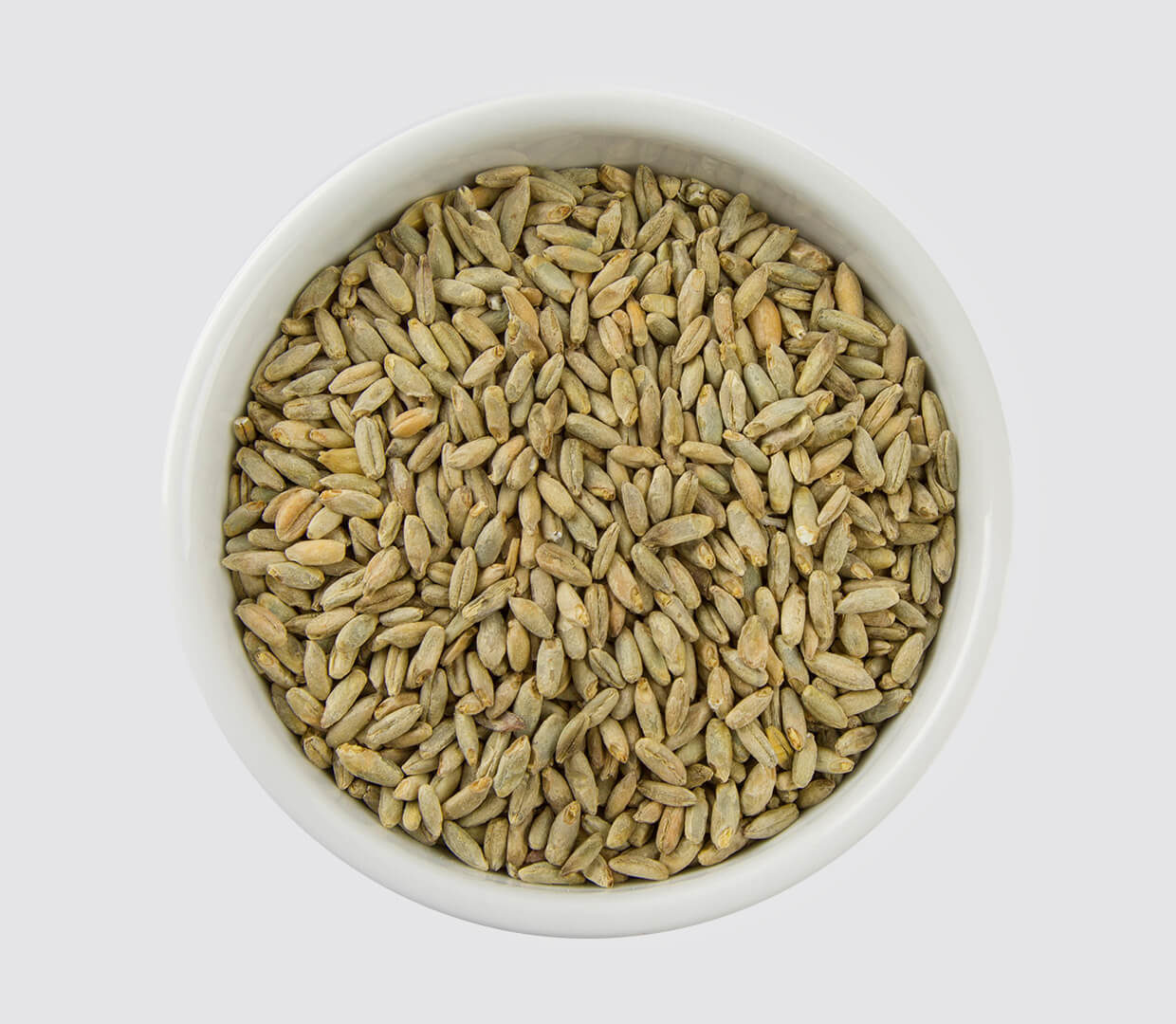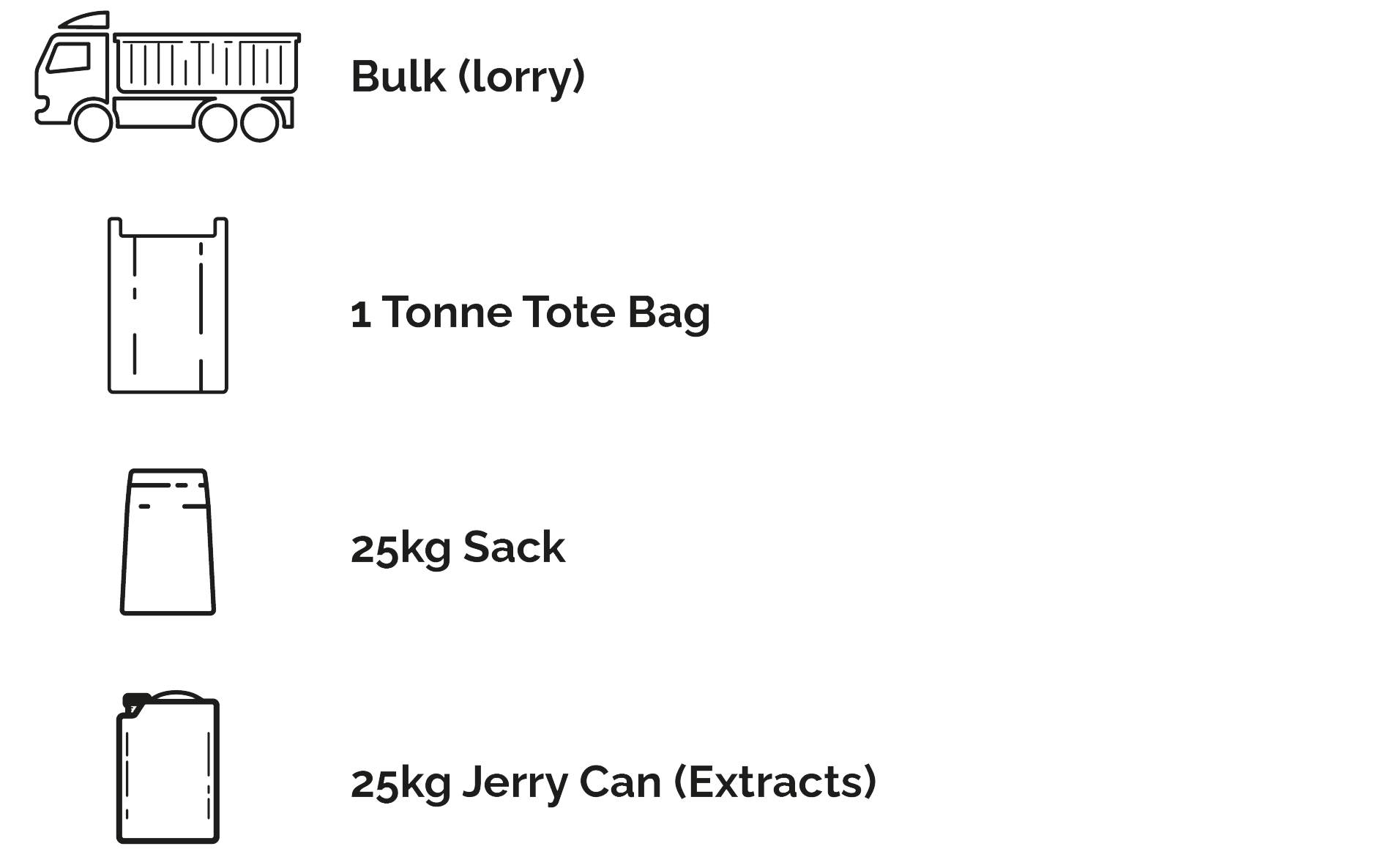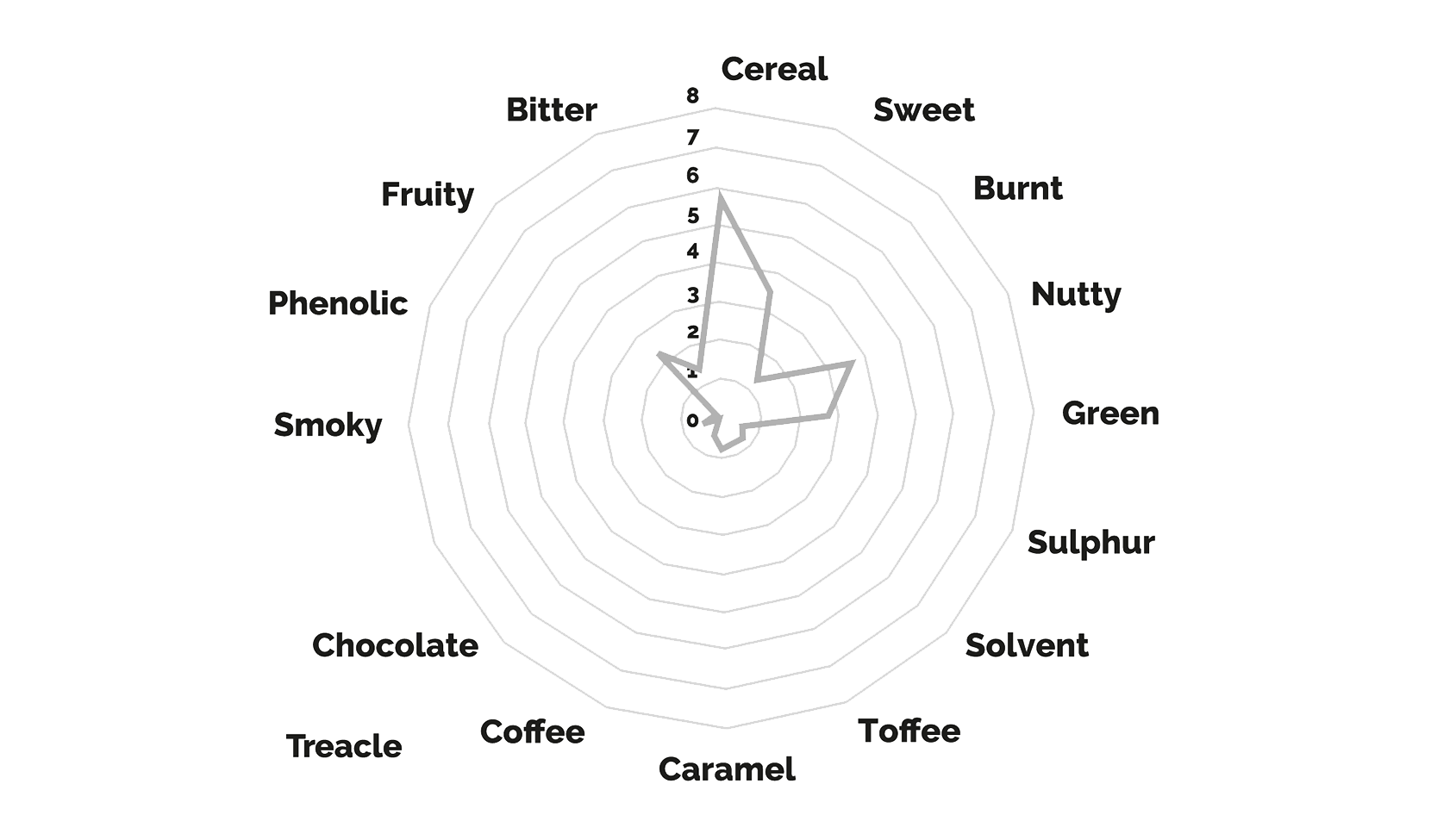
Malt sensory analysis
Although malt tasting is not currently any part of the malt specification, it does offer possibilities to differentiate both positive and negative flavours. Conventional malt analysis may suggest that malts are identical however their flavours could well differ significantly.
We use a method to fully describe the profile of malt using a ‘porridge’ made by grinding whole malts with a small amount of water which helps in the tasting process.
The malt flavour wheel has allowed us to create distinct flavour profiles for the wide range of malts and malted ingredients we produce.

Available pack sizes


Rye is a speciality malt made in our small batch drum maltings and is the perfect addition to beers demanding unique and interesting flavour profiles.
Rye Malt adds a nutty and fruity quality to beers and will significantly increase the mouthfeel when used at high rates. Due to its lack of husk, rye malt must be treated in the same way as wheat malt to ensure there are no run-off issues during brewing. This malt shines in IPAs, golden ales and rye variants of traditional beer styles.
Applications:
The inclusion rates for both of these malts can be up to 50%, taking into consideration that the rest of the grist will need to include high enzyme barley malt to ensure conversion.
Typical Analysis:



